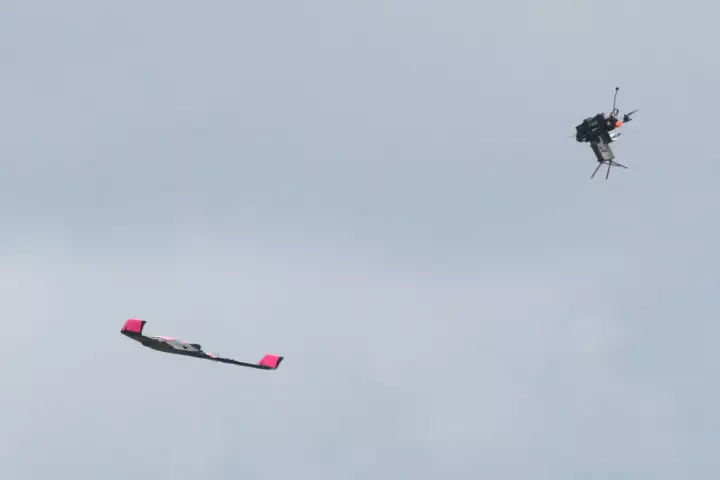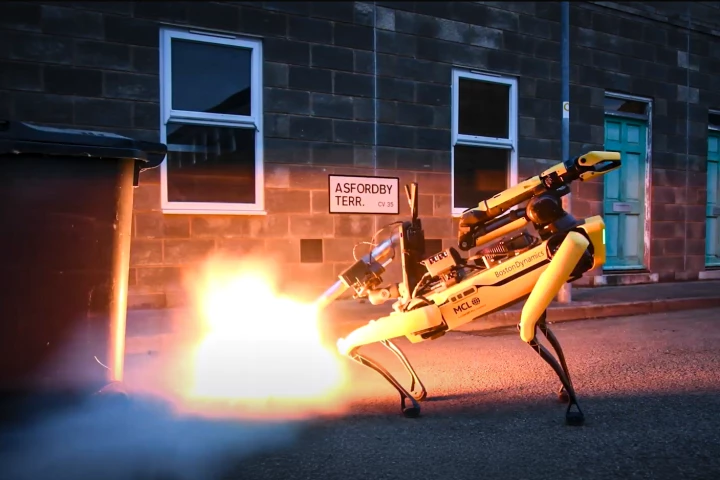Explosives
-
A US Army quadcopter engaged and destroyed a winged drone during an exercise at Fort Rucker, Alabama. These days, that's not such a rare occurrence, but this one is different – it's the first that used a Claymore landmine strapped to the quad.
-
We're used to seeing robot dogs doing all sorts of weird things, but how about something to make the world safer? The British Ministry of Defence's answer is using the mechanical mutts to make detecting and defusing bombs safer and more efficient.
-
Anduril Industries has just announced the Bolt and Bolt-M drone. These aren't your average hobbyist drones either, as the M stands for "munitions," packing up to a 3 lb (1.4 kg) payload of your favorite tactical ordnance.
-
Oceanbotics' SRV-8 underwater ROV (remotely operated vehicle) is certainly no slouch, nor is its more capable sibling, the SRV-8X. The latest version of the vehicle, the SRV-8 MDV, takes things even further – it blows up sea mines.
-
While metal detectors are useful for detecting land mines, they can be fooled by buried metallic debris … plus some mines don't contain any metal. A new system is claimed to work better, by reading the molecular signature of explosives used in mines.
-
Israeli defence tech company Elbit Systems has launched a lethal, autonomous suicide drone. The Lanius is an agile racing quad with a range of AI-powered scouting, mapping and target classification abilities, and the ability to explode when required.
-
While bomb-sniffing dogs provide an invaluable service, training them using actual explosives can be risky for both the canines and their handlers. A new process could help, utilizing a harmless polymer that quickly absorbs the scent of explosives.
-
Cyborg locusts could soon be used to detect explosives. In a new study, locusts were able to smell different amounts of explosive chemicals in the air to track down a bomb, and these detections can be picked up by reading their brain waves.
-
July 16 marks 75 years since of the first detonation of an atomic bomb. Now famous as the Trinity Test, the giant explosion was the culmination of the ultra-secret Manhattan project and would within weeks lead to the end of the Second World War.
-
Improvised Explosive Devices (IEDs) can be difficult for soldiers to detect, as they're made in a variety of shapes and sizes, and are typically buried in the road. A new vehicle-mounted system, however, is designed to "spot the signs" of IEDs.
-
Under a DARPA contract, Raytheon is using synthetic biology techniques to produce two new strains of bacteria – one to seek out hidden explosives below ground and another on the surface that glows when they're found.
-
Bomb disposal work is as dangerous as it comes, but the British Army will now have an advanced new tool to help them with the task at hand. Welcomed into the ranks this week is a shiny new set of ground vehicles that will afford the bomb disposal team some useful capabilities.
Load More











